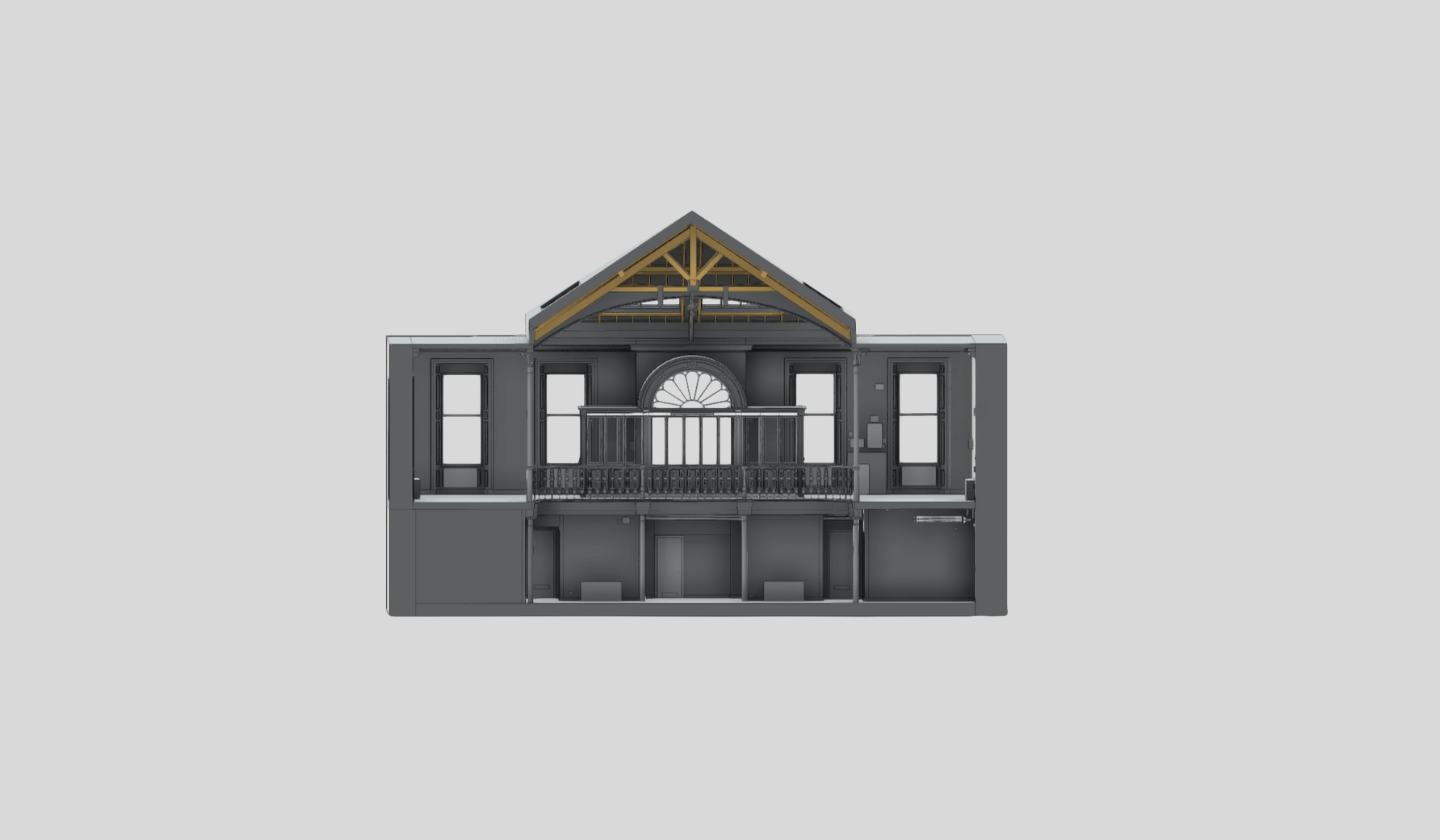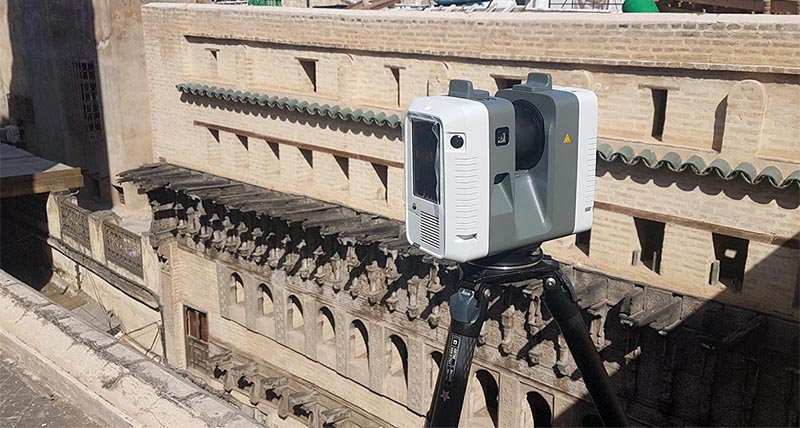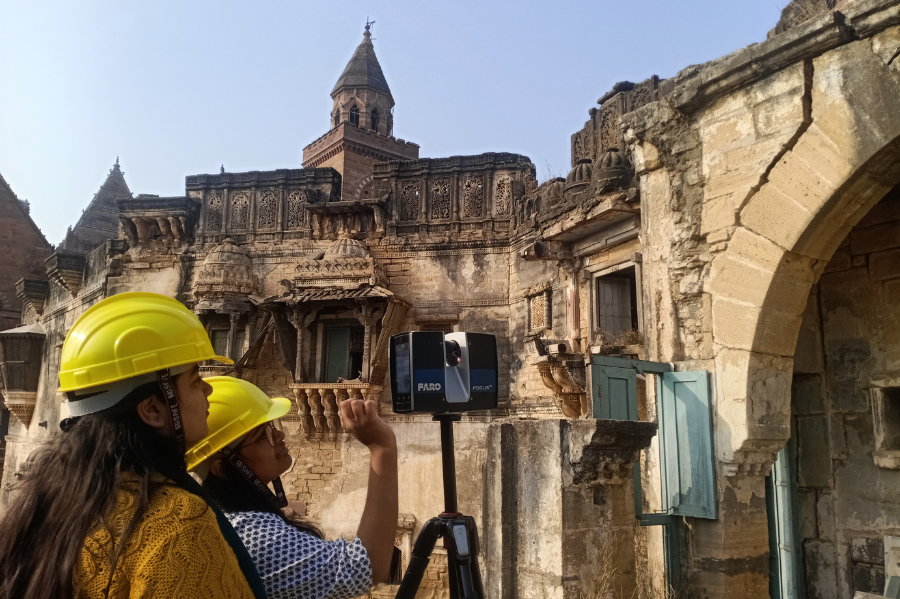As-Built Surveys for Historical Structures: Preserving Heritage with Modern Technology

Every historical building carries a story — etched in its walls, carved into its structure, and layered through centuries of use and change. Preserving these structures is not just about maintaining physical form; it’s about protecting cultural identity and memory. Yet, restoration and preservation are complex tasks that demand absolute accuracy. That’s where as-built surveys come in.
Traditionally used in modern construction to verify “as-constructed” conditions against design plans, as-built surveys have now become essential in the world of heritage conservation. For historical buildings, they provide precise, non-invasive documentation of existing conditions — a digital snapshot of every wall, arch, and cornice.
But the process has evolved. No longer limited to tape measures and blueprints, today’s as-built surveys rely on advanced data capture technologies such as 3D laser scanning, photogrammetry, drones, and Building Information Modeling (BIM). These tools are transforming how we record, analyze, and safeguard historic structures — ensuring that future generations can experience the past with unprecedented fidelity.
This post explores how as-built surveys bridge history and technology, showing how modern innovations are reshaping the field of heritage preservation.

The Role of As-Built Surveys in Heritage Conservation
Historical structures are fragile. Time, weather, and human activity constantly threaten their integrity. Accurate documentation, therefore, becomes a foundation of any preservation effort.
An as-built survey captures every measurable detail of a building in its current state. For heritage projects, this record is invaluable. It supports:
- Authentic restoration — ensuring replacements and repairs match original dimensions and design.
- Preventative maintenance — identifying early signs of structural movement or material decay.
- Regulatory compliance — satisfying documentation standards required by heritage authorities.
- Disaster recovery — providing a digital reference to reconstruct lost or damaged features.
These surveys go far beyond simple drawings. They create a digital baseline, a living reference for future conservation efforts. When properly managed, this data becomes a long-term archive — preserving the structure even if parts of it are eventually lost to time.
Unlike as-built surveys for new construction, which focus on verifying accuracy against design intent, heritage as-builts are about capturing truth — the actual, often imperfect form of the building as it stands today. Every curve, crack, and deviation tells a part of the building’s story. Modern surveying tools ensure that story is documented in exacting detail.
Traditional Methods vs. Modern Technologies
For centuries, surveyors relied on basic tools: measuring tapes, plumb lines, sketch pads, and later, total stations. These methods required extensive manual work and often introduced human error. While dedicated craftsmanship produced remarkable records, the process was time-consuming and sometimes intrusive — not ideal for fragile or inaccessible structures.
The shift to modern surveying technologies has completely redefined what’s possible.
3D Laser Scanning (LiDAR)
Laser scanning emits millions of laser pulses per second, measuring distances to create a dense “point cloud.” Each point represents a precise coordinate in 3D space, resulting in a digital model accurate to within millimeters.
For historical buildings, this means complete geometric documentation — from the grandest dome to the smallest decorative detail. LiDAR can even penetrate through foliage or low light conditions, making it perfect for external scans of large sites.

Photogrammetry
Photogrammetry turns high-resolution photographs into 3D models by analyzing overlapping images. It’s a powerful complement to LiDAR, especially for capturing textures, materials, and color information. When combined, the geometric accuracy of laser scanning and the visual realism of photogrammetry create a highly detailed digital twin.
Drone Surveys
Many historical structures have areas that are difficult or dangerous to access — like roofs, spires, or decaying facades. Drones equipped with cameras or LiDAR sensors can safely capture aerial data without scaffolding or physical contact, minimizing risk while improving coverage.
Building Information Modeling (BIM)
BIM brings it all together. It’s not just a 3D model — it’s a database of information about each element of the building. For heritage sites, BIM models can store details about materials, construction dates, restoration history, and maintenance needs.
This enables conservation teams to analyze structural health, simulate interventions, and plan restorations based on real data.
By integrating these technologies, heritage professionals can document, analyze, and plan restorations with unparalleled precision — all while respecting the structure’s authenticity and minimizing physical interference.
Benefits of Modern As-Built Surveys for Historical Structures
The advantages of modern as-built surveying methods go far beyond convenience. They reshape how we approach preservation on every level.

1. Accuracy and Completeness
Laser scanners and drones capture every corner, curve, and ornament — not just visible features but the hidden geometry that defines a building’s structure. This precision ensures that restoration work faithfully replicates the original design.
2. Efficiency
What once took weeks of manual measurement can now be completed in hours. Rapid data capture reduces project timelines and labor costs, allowing conservators to focus more resources on analysis and restoration rather than data collection.
3. Safety
Surveying fragile structures poses real risks. With remote sensing tools, teams can gather data without touching or disturbing delicate materials, and drones can capture details from dangerous heights.
4. Longevity and Accessibility
A digital twin doesn’t decay. Once created, it can be stored, shared, and referenced indefinitely. Future generations of researchers and restorers can revisit the same dataset — even centuries later — to understand how the building evolved.
5. Collaboration and Interdisciplinary Integration
Modern as-built data can be shared among architects, engineers, archaeologists, and historians. BIM platforms allow everyone to work from a unified model, streamlining communication and decision-making.
The result is a preservation ecosystem that combines traditional artistry with cutting-edge precision.
Challenges and Considerations
Despite its many advantages, integrating technology into heritage preservation isn’t without hurdles.
1. Balancing Technology and Ethics
Preserving historical authenticity means intervening as little as possible. Even non-contact technologies must be used thoughtfully, ensuring data capture doesn’t compromise the building’s physical or symbolic integrity.
2. Data Management
Laser scanning and photogrammetry generate massive datasets — sometimes terabytes of information. Storing, processing, and maintaining accessibility of this data requires robust digital infrastructure and long-term planning.
3. Skills and Training
Heritage professionals must understand both the technological tools and the cultural values they serve. This calls for interdisciplinary training — surveyors who know conservation principles, and conservators who grasp digital methods.
4. Cost and Accessibility
High-end scanning equipment and data processing software can be expensive. For smaller organizations, partnerships or data capture service providers can make advanced surveying feasible.
5. Regulation and Standards
Documentation must comply with national and international conservation standards. Establishing uniform protocols for digital surveys helps ensure consistency and long-term usability of the data.
Addressing these challenges ensures that technology remains a tool for preservation, not disruption.
The Future of Heritage Preservation
The next wave of innovation is already unfolding.
AI and Predictive Analytics
Artificial intelligence can analyze as-built data to detect cracks, misalignments, or material degradation — often before they become visible to the human eye. Predictive modeling can forecast structural risks and guide preventive maintenance.
Virtual and Augmented Reality
VR and AR allow historians, tourists, and students to explore digital reconstructions of heritage sites. A fully scanned and modeled structure can be experienced virtually, preserving access even if the physical building becomes inaccessible.
Cloud-Based Archives
Cloud storage and global collaboration platforms mean heritage data can be securely stored and accessed by researchers worldwide. Digital archives democratize heritage, making it a shared human resource rather than a local treasure.
Ultimately, technology allows us to extend time. Through accurate, dynamic documentation, we can freeze moments of history for generations to come — ensuring that even as materials weather, knowledge endures.
Conclusion: Protecting the Past with Precision
As-built surveys have evolved from technical documentation tools into powerful instruments of preservation. They merge precision engineering with cultural stewardship — transforming how we understand, maintain, and restore historical structures.
Through laser scanning, drones, and BIM, we can now preserve not only the physical form of heritage buildings but also their stories, textures, and spirit. These technologies ensure that restoration is based on truth, not assumption; on data, not approximation.
And at the heart of this evolution lies data capture — the process that turns physical reality into digital heritage.
Professional data capture services provide the foundation for accurate as-built surveys. Using state-of-the-art laser scanning, photogrammetry, and BIM integration, these services ensure every detail is recorded with precision, safety, and care. For architects, engineers, and heritage custodians, partnering with a trusted data capture provider means gaining not just measurements — but a lasting digital legacy.
By combining historical sensitivity with modern technology, we can continue to protect the past with precision — preserving what matters most for the generations that will follow.
Prefer to Speak Directly?
Experience precision in every project.

